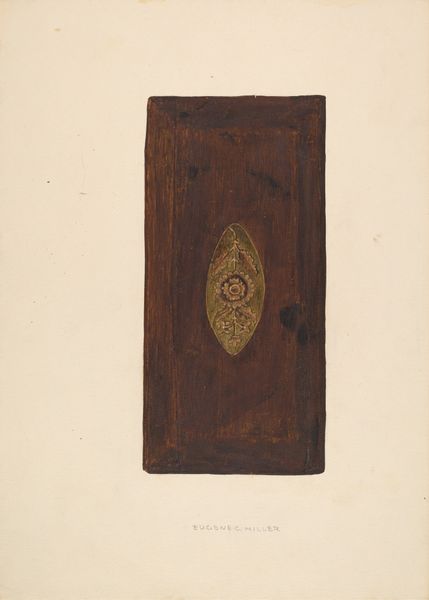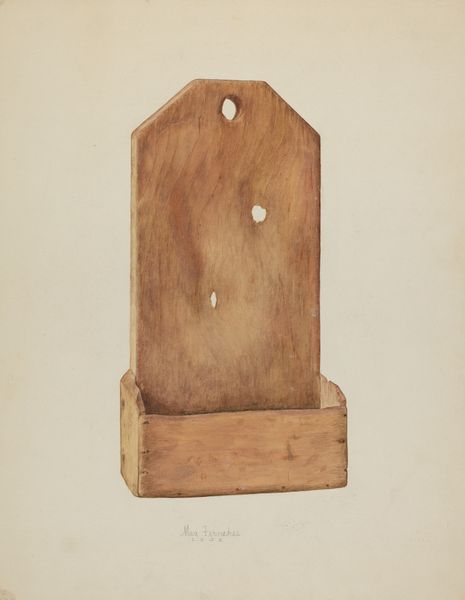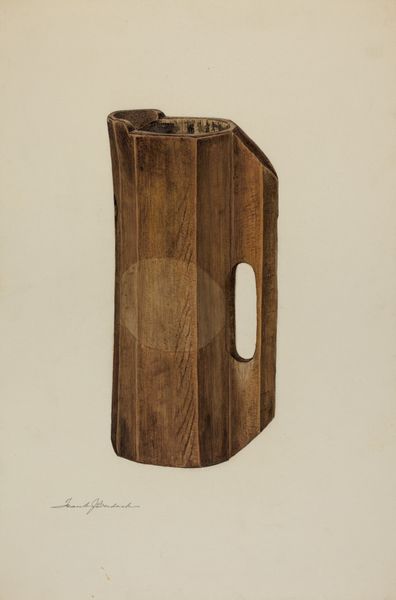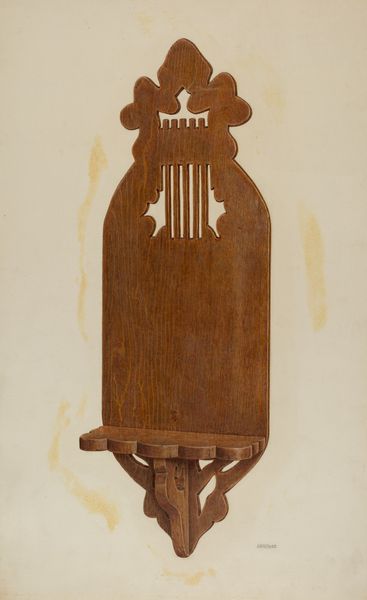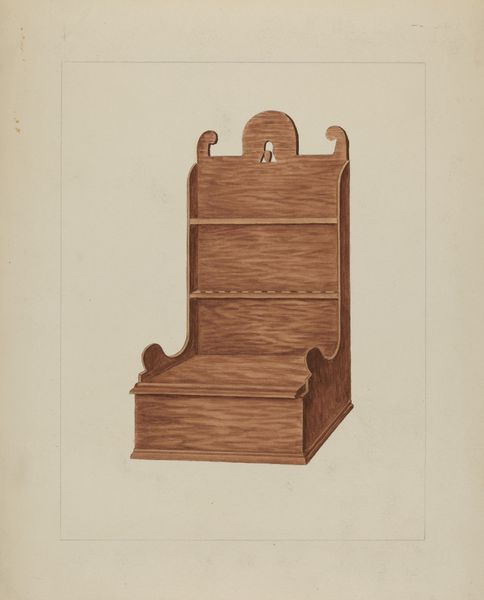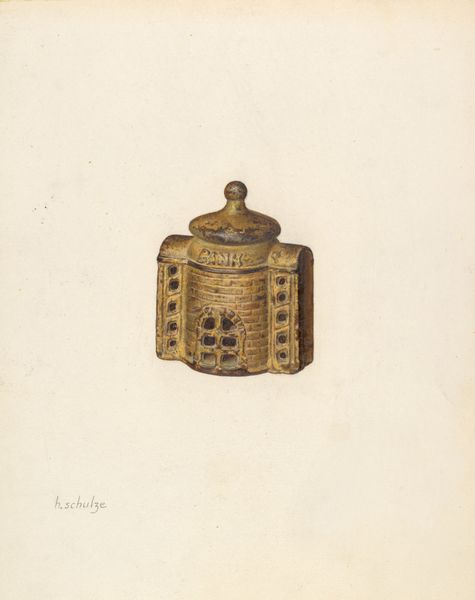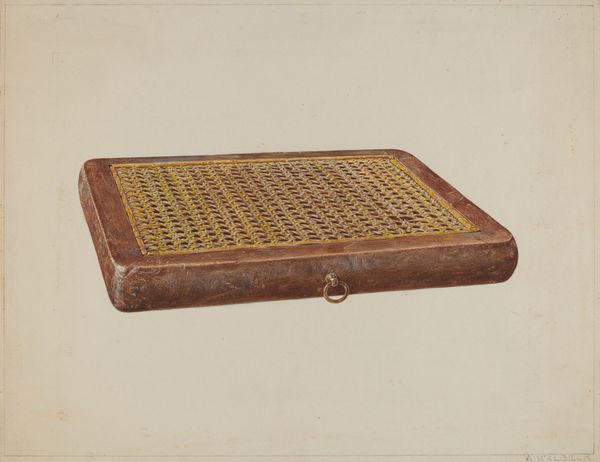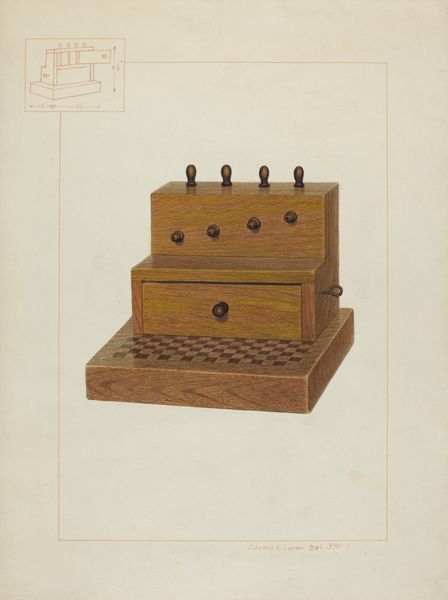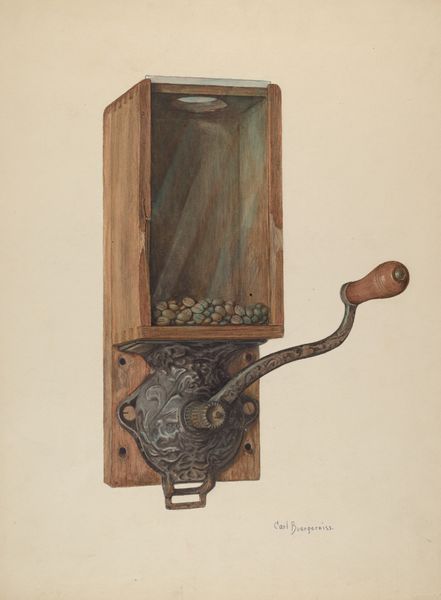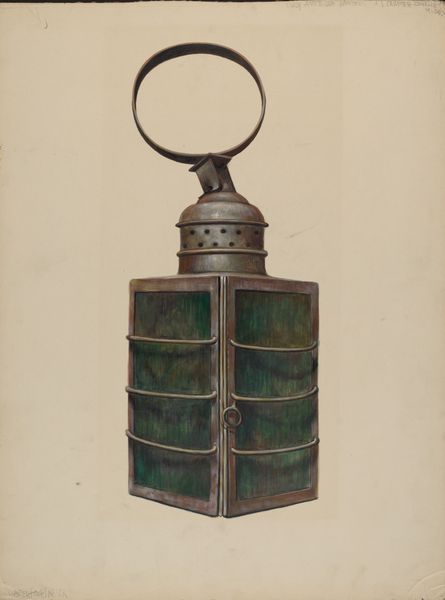
drawing, coloured-pencil, paper
#
drawing
#
coloured-pencil
#
paper
#
modernism
#
watercolor
#
realism
Dimensions: overall: 29.3 x 22.8 cm (11 9/16 x 9 in.) Original IAD Object: 14" high; 10" wide; 9" deep
Copyright: National Gallery of Art: CC0 1.0
Curator: Looking at it now, the first thing I notice is its almost unnerving stillness and symmetry. There's a kind of muted warmth in the colour palette that makes it quite inviting, yet distant. Editor: This is a coloured pencil and paper drawing entitled "Knife Box - Mahogany" dating back to approximately 1936 and produced by the artist Henry Meyers. Curator: It's intriguing how such a seemingly mundane object can evoke such a strong sense of contained potential. I keep thinking about the labour it must have taken, crafting the physical object that is depicted so carefully. The object seems rooted in specific gendered dynamics of that era as well as it relates to culinary or craft tools. How were objects and associated crafts valorized then, and for whom? Editor: I think placing it within the context of the 1930s, during the Great Depression, gives us insight. At that time there was a back-to-basics movement, where crafting and making were becoming very important and central to people's livelihoods and daily life. And that movement came about partly out of necessity but then quickly became part of everyday culture. Curator: Absolutely. I am also wondering about its symbolic presence. Is it about functionality and necessity, or also about a sense of aspiration – possessing not just the necessary, but the aesthetically pleasing necessary? And perhaps who it excluded as well... Given the sharp contents usually inside, how does a wooden piece like this either disrupt or perpetuate assumptions of safety and luxury? Editor: That consideration of who gets included or excluded then brings up broader ideas around class and privilege. The precise lines of this drawing do create an air of orderliness, while also making the entire scene very stoic. Even though it portrays a physical item of domestic use. We could talk about how socio-economic disparity, often ignored in favour of "domestic bliss," can actually highlight a false, sometimes detrimental, cultural and societal narrative. Curator: Precisely. And understanding the historical and social context deepens our relationship with not just art, but history itself. I see this simple drawing differently now. Editor: Indeed, context is paramount. Seeing the world through that lens is important in not only studying art but appreciating it in our daily lives.
Comments
No comments
Be the first to comment and join the conversation on the ultimate creative platform.
